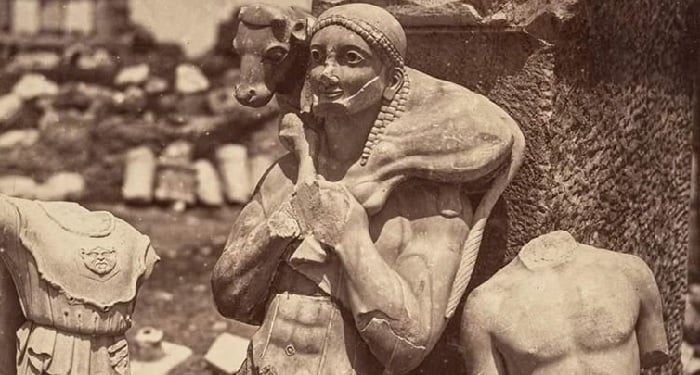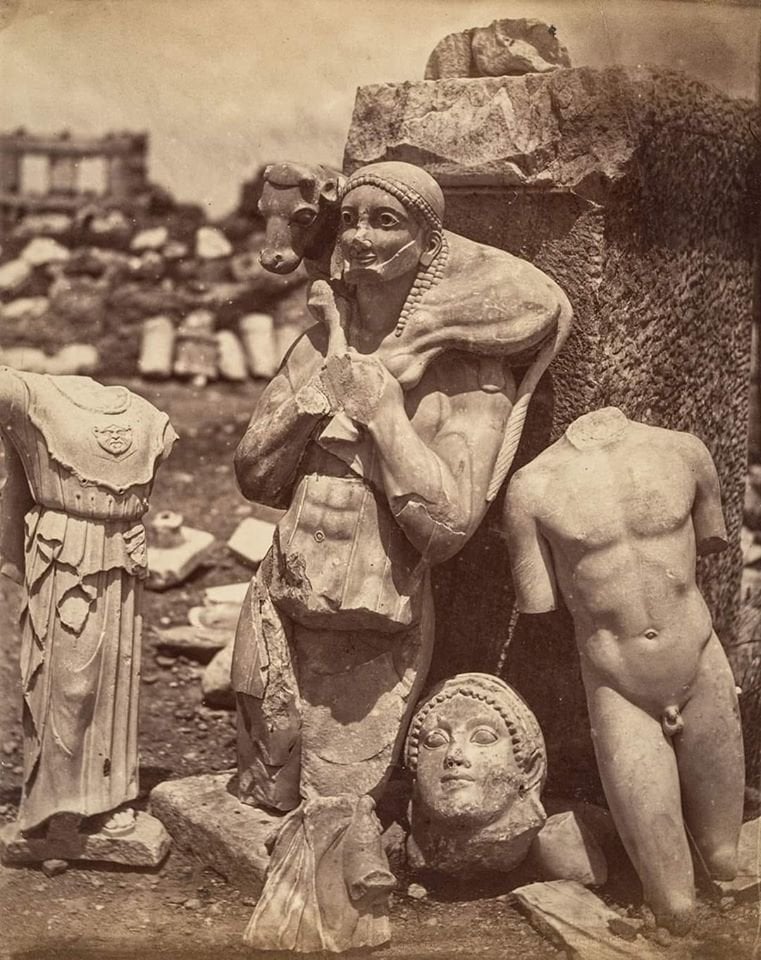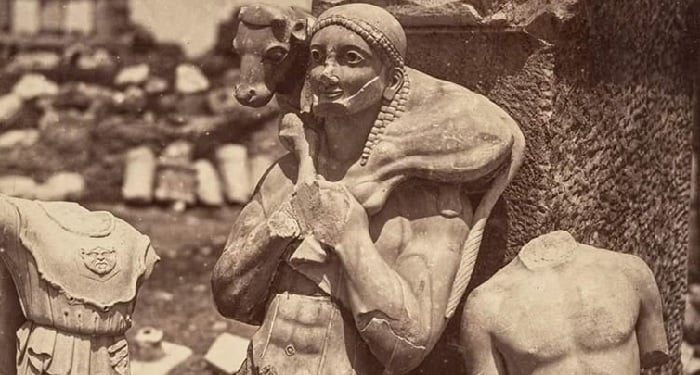
This is the first known photograph of the magnificent ancient Greek statue of Moschophoros, also known in English as “The Calf Bearer” when it was discovered on the Acropolis in 1864.
The impressive statue, dated to c. 560 BC and estimated to have originally measured 1.65 meters (5.4 feet) in height, is now in the Acropolis Museum.

The inscription on the plinth claims that the statue was dedicated by someone named Rhombos (possibly Kombos or Bombos; the beginning of the name is missing) to Athena, the goddess of wisdom.
This suggests that the sponsor was a very well-to-do man and a prominent citizen of Attica who offered his own likeness to Athena. He carries a calf on his shoulders which may represent the sacrificial offering he is about to give to the goddess.
The Calf Bearer depicts human emotion, connection to animals
The Calf Bearer marks a radical shift in Greek art toward deeper depictions of human emotion, compared to earlier sculptures that were more rigid.
The interaction shown between the calf and the calf-bearer in the work represents a strong, inseparable bond between the two. This may be a reference to humankind’s reliance on farm animals for survival, as well as a nod to their ritual and sacrificial use.

The man in the sculpture is smiling, which is a unique and new feature compared to earlier Greek statues.
The condition of the Moschophoros is poor, and it has tragically been fractured in some areas. The legs are missing below the knees on both sides, and the hands are broken off. The genitals and the left thigh have separated from the whole sculpture.
Additionally, the lower half of the face (the chin area) has been chipped off. The foot, standing on its plinth, is now connected to the base, however.
The form of the calf is well-preserved while Moschophoros’s eyes, which had been created from another substance, perhaps either glass or gemstones, are absent.
The Acropolis Museum
The Acropolis Museum is a treasure trove of Greek history from prehistoric times through the greatest days of Greece’s Golden Ages. Built over streets in the ancient city, it has a reinforced glass floor over which visitors can walk and peer down into carefully-excavated streets and buildings, gazing back into the history of the city itself.
Opened in 2009, the new Acropolis Museum faces the monument in the very heart of the picturesque Plaka district. It is ten times larger than the previous museum, which was built on the hill of the Acropolis itself.
Stunning natural light is a focal element of its architectural design, with its creators aspiring to create a simple and precise museum with the mathematical and conceptual clarity of ancient Greece.



